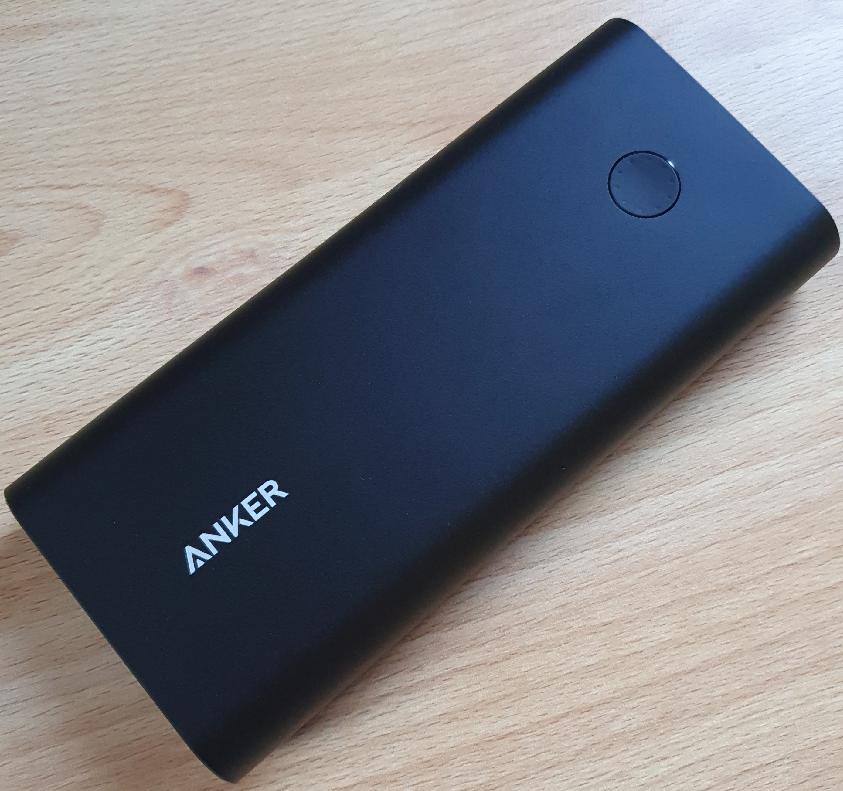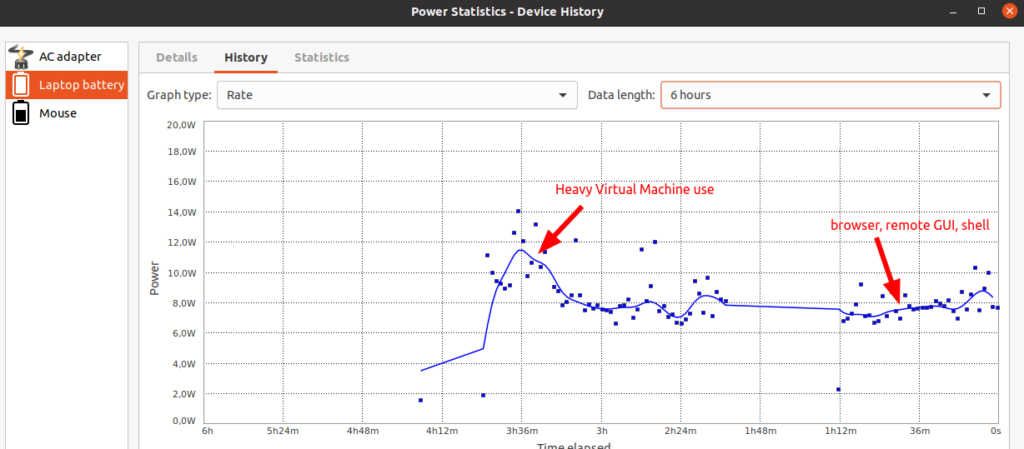
I like being able to work from anywhere and the only limiting factor is how long the battery of the notebook will last when I’m away from a power outlet. When I bought a new notebook August 2021, I made sure it came with USB-C Power Delivery (PD) so I could take as many spare batteries with me as I wanted to increase my time away from the desk. So one of the first things I bought once I had the new notebook was a third party battery that can charge just about any USB device, including notebooks with USB-C power delivery function. But how long would the internal and external battery power my notebook in practice? The answer: It depends.
Weight Weight Weight
Before talking about different usage scenarios and how long the batteries last, let’s talk about weight first. I like walking longer distances instead of taking public transportation, so my backpack should be as light as possible. My Lenovo X13 comes with a 46 Wh internal battery and weighs 1.2 kilograms. The external 130 Wh battery pack shown above weighs another 600 grams, and the phone I use as a Wi-Fi access point weighs another 200 grams. And then there is the mouse, but with 30-40 grams, its weight is rather negligible. So in total, the computing equipment I require for my daily work weighs 1.4 kg for short excursions without an extra battery, and 2 kg if I take the spare battery with me. Bonus: The spare battery also charges the Wi-Fi hotspot phone should it run out of power during the day. Does it need to be recharged? Well, again, it depends.
Power Consumption
Notebook manufacturers like to boast how long the device will run on a single battery charge. In practice the value is pretty meaningless, as depending on the workload, power consumption varies a lot. Here are some examples from my daily work: If I’m sitting in a place without direct sunlight and reflections, mostly work on the shell, a bit in the web browser, and use remote GUI access to my machines at home, power consumption can be as low as 6-7 watts with display brightness at about 50%. At such a rate, even the internal battery would last well over 5 hours.
But there are many activities that let power consumption rise significantly. In bright environments, one has to turn display brightness up significantly, which immediately adds 2 to 3 watts to the baseline. So one is quickly at a power consumption of 9-10 watts in such a scenario. That reduces the autonomy time with the internal battery to below 4 hours.
I’m often in web based conference calls for several hours, which requires significant additional power. With the brightness of the screen set to high, the notebook easily requires 12-14 watts. That’s twice the power consumption of the low brightness, low computing intensive scenario above.

In addition, I often use virtual machines on my notebook, which further increases power consumption. Even if the OS in the VM is pretty much idle, power consumption goes up by at least 1 watt. Often, I use quite processing intensive applications in a VM, which easily drives power consumption to 16-18 watts. Now do a web based conference call in addition, and that internal battery won’t last much more than 2 hours. You can see by now where I am getting at with the ‘it depends’.
Autonomy Time – From 10 Hours to Infinity
So in practice, I usually take the external battery with me, as it triples my autonomy time, and I usually never know what the day will bring. In the low load scenario above, I can easily be away from a power outlet for 18 hours. The low load scenario also has the additional benefit that the battery of the Wi-Fi hotspot phone also easily lasts the full day, so I don’t have to recharge.
When it comes to web conferences, I usually prefer using an app on the Wi-Fi hotspot phone, as the platform and the apps comes with pretty good background noise suppression. Attending the calls on the notebook in a web browser has no noise suppression at all, and people will tell you pretty quickly. That in turn means that the battery drain on the phone is quite heavy, and depending on how many conference calls are going on, the phone’s battery will not last a full day. Not a problem, because the external battery can also recharge the Wi-Fi hotspot phone over USB.
So, long story short, what’s my personal computing autonomy time with one external battery and a weight in the backpack of 2 kg? In most scenarios, I get well over 10 hours out of this setup, with the external battery about 3/4 discharged when I tried this recently. That’s a comfortable margin. If even more is required, 200 grams extra in the backpack for a charger will pretty much extend the autonomy time to infinity if there’s at power outlet somewhere. And there usually is, so it’s always possible at some point during the day to recharge the external battery in a corner. It doesn’t have to be close and nobody will trip over a cable, as the notebook will happily run on the internal battery while the external battery recharges somewhere else. A comfortable setup, I’d say!